Day 2 started with the yummiest juice I’ve ever had – a frothy mixture of guava and papaya made by my guesthouse. Then we were off on our first planned excursion – a walking tour of Old Havana. This was something I’ve been looking forward to for months! Old Havana is the city center and the former positions of the city walls form it’s outline.
Alejandro was our local guide during the tour. He was fascinating to talk to. By education – which, it should be noted – is free in a communist country – he is a criminal attorney. He has a wife who also practices law and a 7 year old son. When the country embraced more tourism, he was finally able to use his entrepreneurial spirit to earn some more money. So he leads tours one day a week and drives cars for the tourists. In his “normal” job he makes 20 CUCs a month. That’s 20 American dollars! A MONTH! He says he makes more money during these tours than he ever could make working as an attorney. Interesting…I know for a fact that he made over 20 CUCs just in tips from our tour alone. Because he can supplement his income so considerably, he loves doing tours and he loves the throngs of tourists entering Cuba. He’s also looking forward to the cruise ships that will be starting to come to Havana in just months.
Old Havana is what I pictured it to be – quaint, eye-droppingly beautiful, sad, in varying stages of decay and bustling. But, I had no idea how many tourists would already be here. I can’t even imagine how it will be when Americans really start to come here.
Immediately upon entering the city, I got to see Cuban children and teens dressed up in dresses and suits practicing their dances. Apparently they do this every weekend and it is similar to what you’d see in the states – children not at all focused on what they’re supposed to do as their parents rile them in. And then there are the teens fully made up and looking like someone forced them to be there. It was nice for me to see that this section of the city is filled with Cuban life – it doesn’t just serve the tourists.
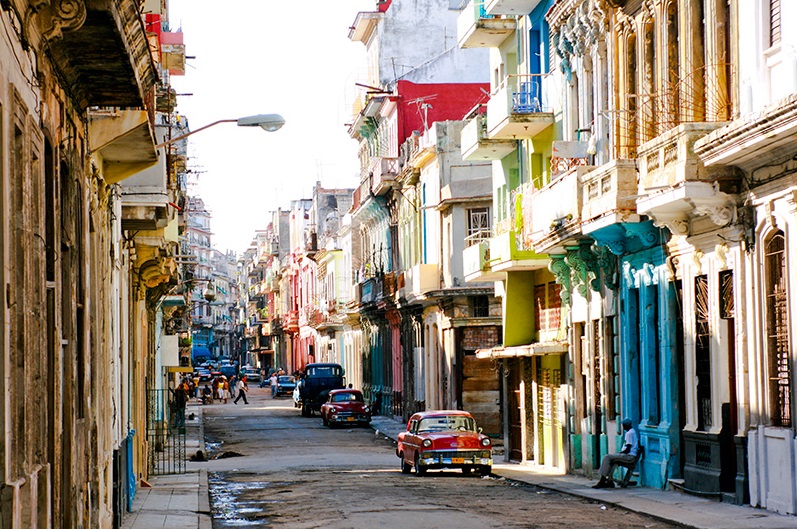
The buildings in Old Havana are simply lovely – built in the baroque and neoclassic style. The buildings fell into severe disrepair in the late 20th century because of a lack of funds for upkeep during the revolution. Some of them continue to be very shabby but in 1982, Unesco declared this area a world heritage site and the money for restoration began. We wandered around the cobblestone streets and squares learning tidbits for Alejandro. One of the interesting things and perhaps it should have been obvious but weapons are illegal here unless you’re part of the police or military. You will go to prison if you have them. And unlike other areas of Cuban law where the people “find a way” around it, people simply do not have weapons here. He actually said that even if you’re a member of the police, you are not legally allowed to shoot anyone – even in self defense – unless whoever is trying to hurt you also has a gun. So if you’re police and someone attacks you with a machete, you’d better be prepared to run!
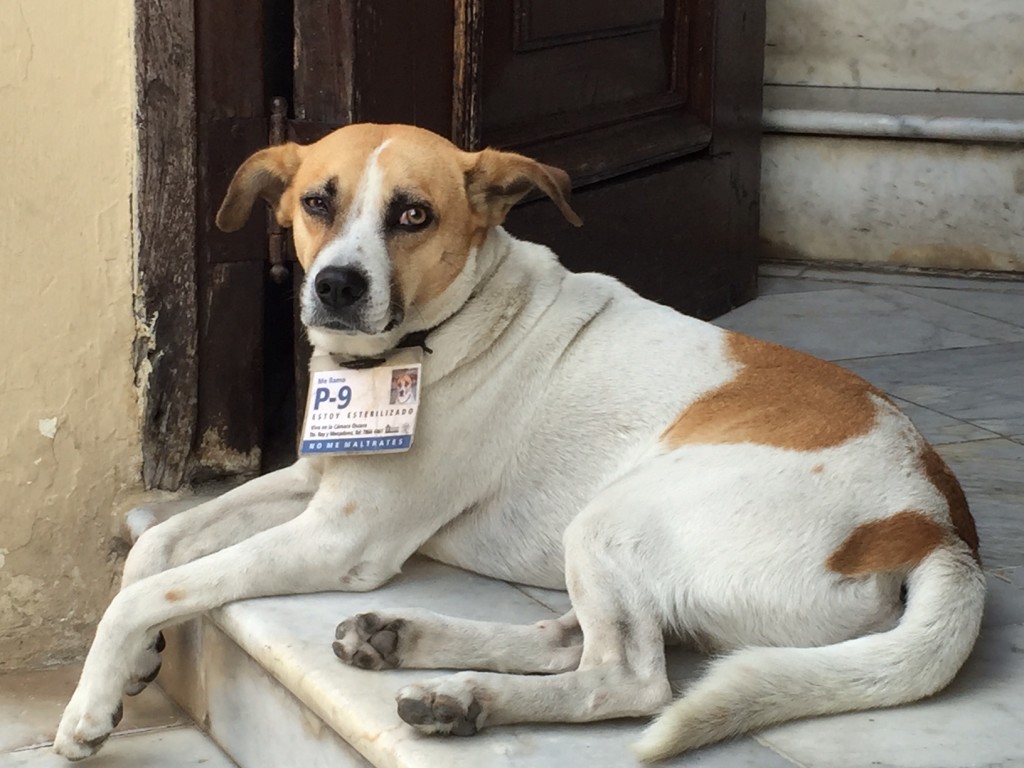
The government has embraced tourism in Cuba. They pay to have entertainers in the streets. We saw bands and individuals playing instruments. There were dancers and a group on stilts. Apparently the government pays these individuals to entertain but, of course, they make the majority of their income in tips. And Cubans come to old town as well. Alejandro said he brings his son here. Not often, because he can’t afford it, but because his son loves it.

We got to go into the train that the president used to ride in during his very long term. A friend in the group called it “Air Force One for Cubans”. An appropriate name. But it was cool to see where the “first family” ate and slept and made decisions back in the revolutionary days.
The tour ended with a cocktail on a rooftop bar in one of the beautiful old hotels in Old Havana. There’s a room in the hotel where Ernest Hemingway used to stay. I’m getting used to these rum drinks. This one was called Ambros Mundos and was what? Rum and juices of course!
After our tour of Old Havana we took the bus to see different parts of the city. For those that know me, this is not the way I like to see things. But, per my pre-trip intentions, I’m going with the flow and staying present and appreciating things 🙂 We drove by the U.S. Embassy where the American flag recently started flying. This building has been around for decades but until last year didn’t even have a sign on it. The drive toward the building is interesting. In front of the building are 150 massive flag poles. The story behind these flag poles is fascinating: when the embassy was closed, it was demoted to only an interests section, and the diplomats remaining there were forbidden to issue public statements or communicate with Cubans in general. To get around this, in 2006 they set up an electronic billboard across 25 windows near the top of the building on which “subversive” messages were posted. One of which included Abraham Lincoln’s quote: “No man is good enough to govern another without his consent.” In response, Fidel and his regime raised 150 black flags to obscure the billboard from view from any angle. They no longer raise the flags and the electronic billboard is gone , but it’s interesting to see how the government works to keep its people under it’s thumb.
We went to the Plaza de la Revolution next. This square is Havana’s largest and is the scene of important public events and political rallies. On the two ugly buildings housing the offices of the Ministries of the Interior and Communications are steel memorials of two of the most important, deceased heroes of the revolution – Ernesto “Che” Guevera and Camilo Cienfuegos. Across the street sits a humongous memorial to Jose Marti who is a national hero in Cuba for dedicating his life to the promotion of liberty and political independence for Cuba from the Spanish in the 19th century. It is the tallest structure in Havana and features Marti in the famous Thinker pose. Fidel Castro is not yet memorialized in the square because he is still alive.
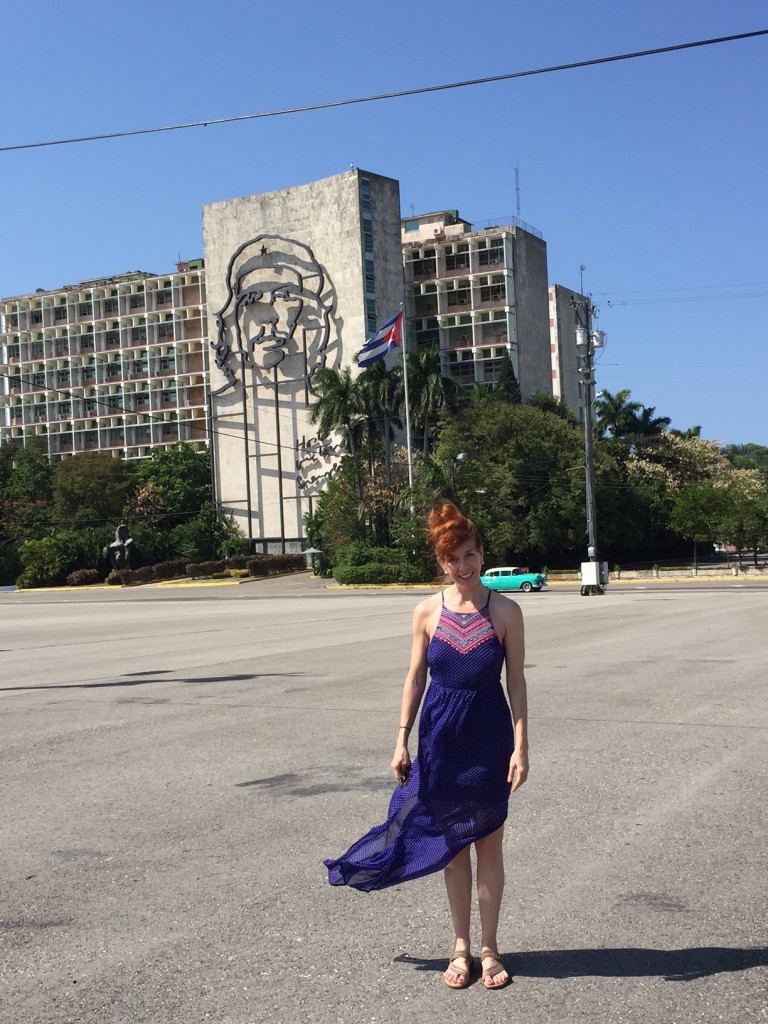
We continued on to the wacky and slightly perverse Callejon de Hamil which is an alley where local artist Salvador Gonzalez has adorned every space with murals and sculptures inspired by the religion called Santeria. Santeria resulted from African Americans slaves in Cuba combining their religion with Roman Catholicism. Their customs include a trance and divination system for communicating with their ancestors, animal sacrifice, and sacred drumming and dance…you can see how the art of such a religion would be a bit crazy. Let’s just say one of the places to rest your weary bones is in a former bathtub now called art. I loved this little avenue – it had a wild and no-one-cares attitude! The art was al-encompassing, the music was blaring and Cubans were perched carelessly over brilliant pieces of art. Freakin’ cool.
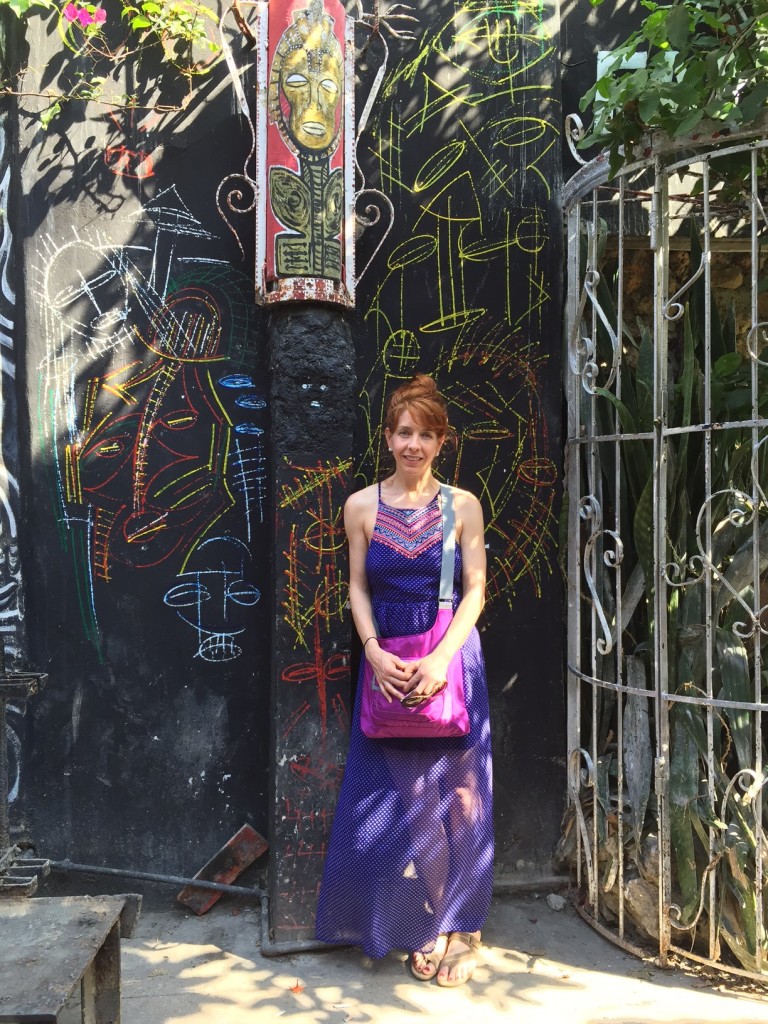
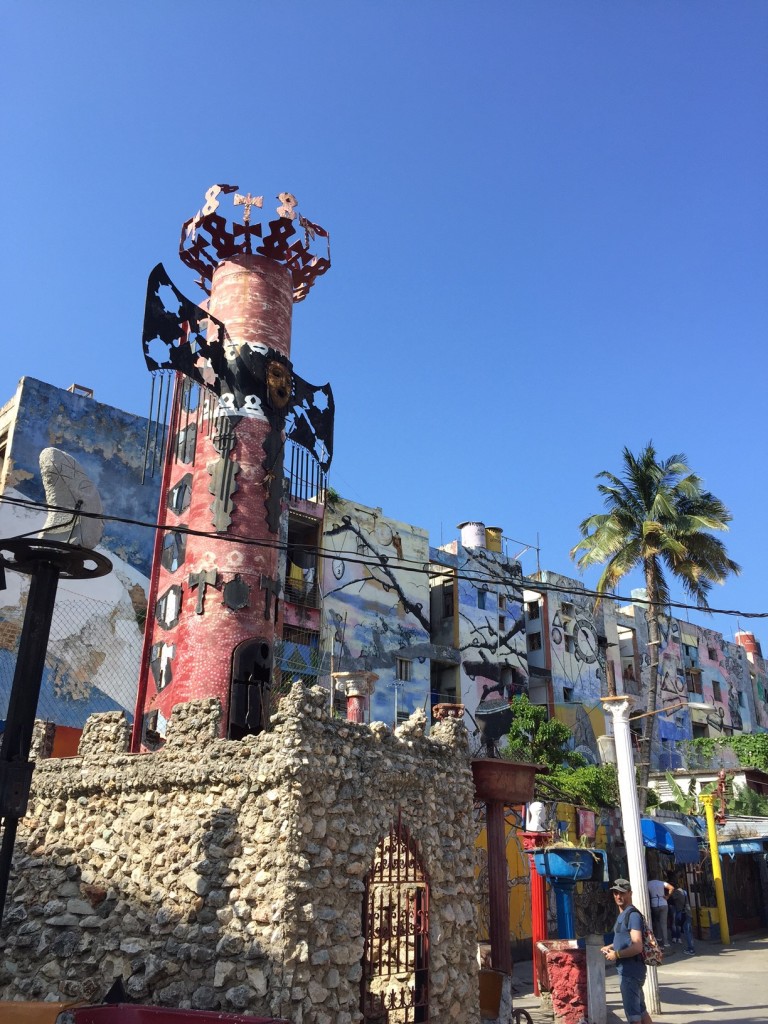
Our evening ended with a wonderful dinner at a local Paladar called Karma. Perhaps obviously, the paladar focuses on the meaning behind the word and has some Indian tendencies. The restaurant is owned by a local WOMAN. Apparently this is pretty rare and people have really tried to support and grow women-owned businesses. It was packed so they were definitely succeeding. In fact, according to Tony, there was a famous Cuban producer waiting for a table when we left.
We were off to the famous canon ceremony that takes place in the The Fortaleza de San Carlos de la Cabaña. The fort was built around 1774 by the Spaniards to control the access of the Havana Port. The canon ceremony takes place every single night at 9 pm. There is some pomp and circumstance performed by Cuban soldiers with guns and fire and a huge canon! At about 10 minutes after 9, they light the canon and the sky lights up and the people in the crowd – including me – jump! The ceremony symbolizes the times when the Cubans had a curfew and prior to that – when the gates to Old Havana was to be closed. The curfew was at 9 pm so when they heard the canon blast, Cubans knew that it was time to return to their homes. Obviously there is no longer a curfew but the ceremony remains and even locals come out to it. There were many, many families with children vying for a spot to see the canon blow!